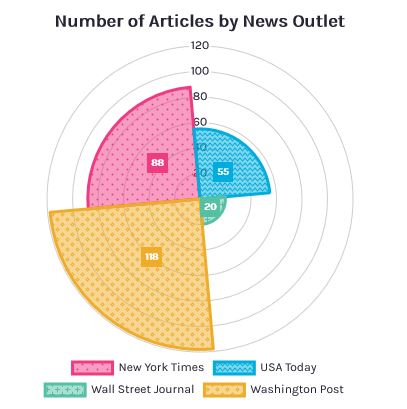How well does the news cover the process of scientific discovery?
That question is the focus of the first report of the Annenberg Science Media Monitor, a project of the Annenberg Public Policy Center‘s Science of Science Communication program. The Science Media Monitor analyzes the news coverage of widely reported scientific findings in order to increase the public’s understanding of the scientific process.
The Science Media Monitor is supported by a grant from the Rita Allen Foundation.
The media monitor’s first report was released this past weekend to attendees of the Association for Education in Journalism and Mass Communication annual conference in Washington, D.C.
The report examines how four major media organizations reported on 165 scholarly studies from April 2015 through December 2017. The outlets – The New York Times, USA Today, The Wall Street Journal and The Washington Post – published a total of 281 stories on those studies.
What news stories say about scientific discovery — and what they don’t
As prior research has shown, news reports cast most scientific findings as a quest that leads to discovery. The media monitor’s first report centers on that narrative.

According to the report, news stories were likely to note the process that led to the scientific finding, likely to include words such as discovery, breakthrough, and advance, and likely to mention unanswered questions or next steps. But news stories were unlikely to feature a key element in the path to scientific knowledge: false starts or dead ends.
The content analysis found that:
- 46 percent of the articles characterized the scientific findings as a discovery;
- 49 percent mentioned an ongoing inquiry or next steps;
- 4 percent noted dead ends or false starts;
- And 74 percent described the process through which scientists arrived at the reported finding
“Because media shape our perceptions,” noted Kathleen Hall Jamieson, director of the project and director of the Annenberg Public Policy Center, “the scientific community needs to understand the storylines characterizing news accounts both about consequential research and about the scientific community’s responses to concerns about such matters as failures to replicate consequential findings and the rise in the rate of retractions.”
Future Science Media Monitor reports
Future reports of the Science Media Monitor will spotlight reporting on scientific retractions and on controversial science, such as the CRISPR-Cas9 gene editing tool.
“[D]efective narratives can enhance the capacity of partisans to discredit areas of science – including genetic engineering, vaccination, and climate change – containing findings that are ideologically uncongenial to them,” Jamieson wrote in an article in the Proceedings of the National Academy of Sciences introducing the original content analysis of the discovery, retraction, and crisis narratives in science news. “In contrast, accurate narratives can increase public understanding not only of the nature of the discovery process, but also of the inevitability of false starts and occasional fraud.
“And by responsibly publicizing both breaches of integrity and attempts to forestall them, news can perform its accountability function without undermining public trust in the most reliable form of knowledge generation humans have devised.”
Read more about it: https://www.annenbergpublicpolicycenter.org/science-media-monitor


